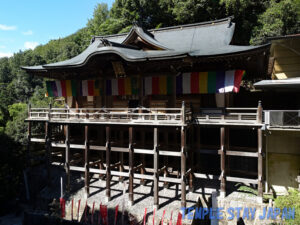Jonangu
TEL : 075-623-0846Address : 7 Nakajimatobarikyucho, Fushimi Ward, KyotoAccess : JR Kyoto Station > (Kyoto City bus) > jonangu bus stop > 2 minutes walkParking : There is a parking lot
Introduction to Jonangu shrine
Jonangu Shrine was built in 794 when the city of Kyoto was founded. The name means a shrine located on the south side of the castle.
In Japan, there is a belief that certain directions bring good or bad luck. It is said that Jonangu Shrine can help you avoid misfortune when traveling or building a house in an unlucky direction.
Five Japanese Gardens
Jonangu Shrine has five Japanese gardens. The spring garden features 150 weeping plum trees. Camellia flowers also bloom.
The Heian garden has a large pond. You can enjoy a stroll along the edge of the pond.
Another garden has a tea house. A shrine maiden prepared some matcha (Japanese Tea) for me.
Beautiful Shrine Maiden Dance
Shrine maiden dances are performed regularly. It is held every day from mid-February to mid-March, and on weekends and holidays in May and September. (Please check the shrine’s website for detailed schedule.)
I went there in March, and the shrine maidens were wearing plum blossoms in their crowns and dancing while holding branches.
In May, the flowers change to wisteria, and in September they change to chrysanthemums.
After the shrine maiden dance, worshippers were given amulets.
Yutate Kagura (ritual dance and purification ceremony)
The Yutate Kagura was held on January 20th. The shrine maiden used bamboo leaves to splash boiling water and drive away evil spirits.
Rice porridge with seven herbs to pray for good health
In Japan, it is said that eating seven herbs in early spring will make you healthy. These plants are considered auspicious because they can withstand the cold and sprout.
On February 11th at Jonangu Shrine, I was able to eat rice porridge with seven herbs. It was a cold day, so it was delicious and warmed me up.

















